Abstract
1. If a weak vertically oriented prism is inserted before one eye, binocular single vision is restored by vertically divergent eye movements (one eye turning upward, the other downward); and it is usually assumed that the vertical rectus muscles mediate that fusional reflex. 2. When vertically divergent eye movements occur, both eyes also systematically rotate in parallel around their lines of sight (conjugate cyclotorsion). The direction of these unexpected eye movements demonstrates that they must be due to the oblique muscles, not the vertical recti. 3. The magnitude of these conjugate torsional movements is large enough to imply that the oblique muscles, in producing such torsion, would simultaneously effect all the divergent vertical re-orientation of the eyes required by the targets. 4. The cyclotorsion is accompanied by systematic translation of the eye along a nasal-temporal axis; the direction and extent of that non-rotational displacement indicate that the eye movements of the fusional reflex may well be mediated exclusively by the superior oblique muscles, acting against fixed tone in the inferior oblique muscles. 5. This revised understanding of the oculomotor co-ordination involved in the vertical fusional reflex has significant implications for both neurophysiology and oculomotor surgery.
Full text
PDF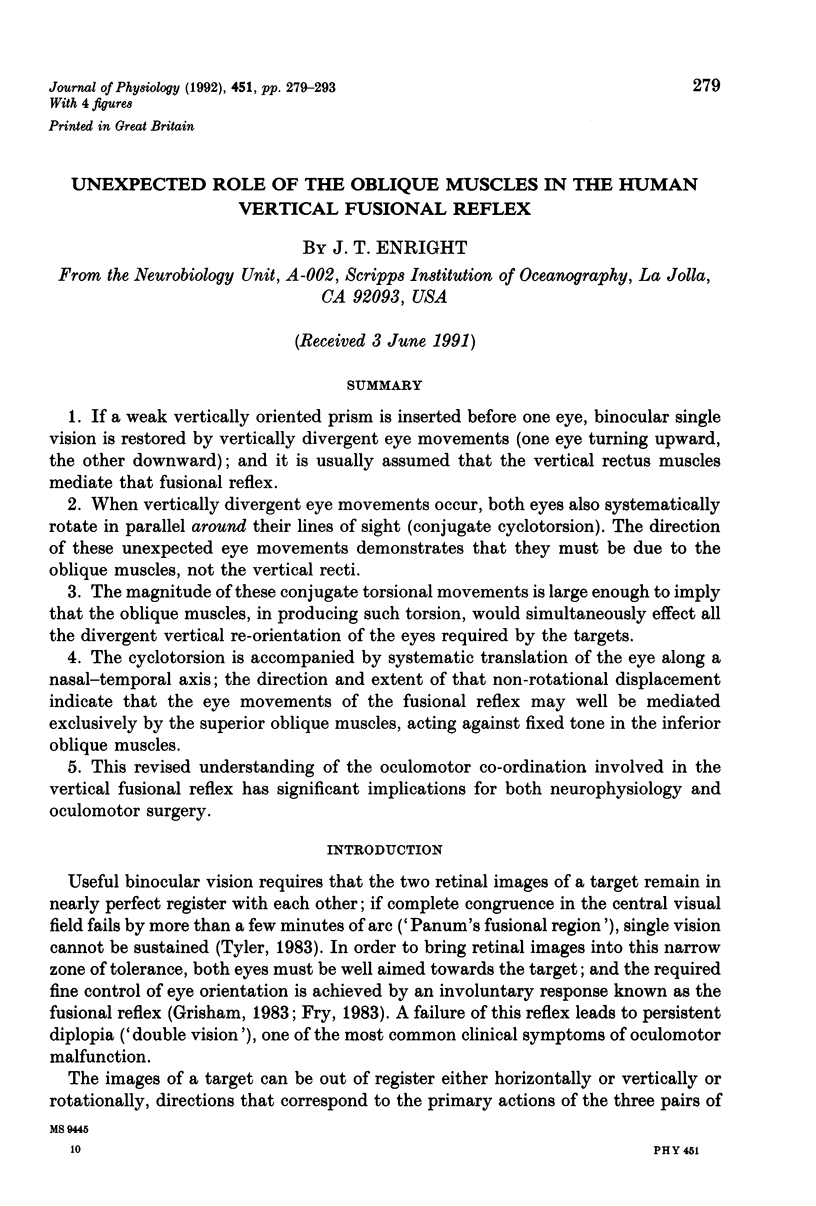
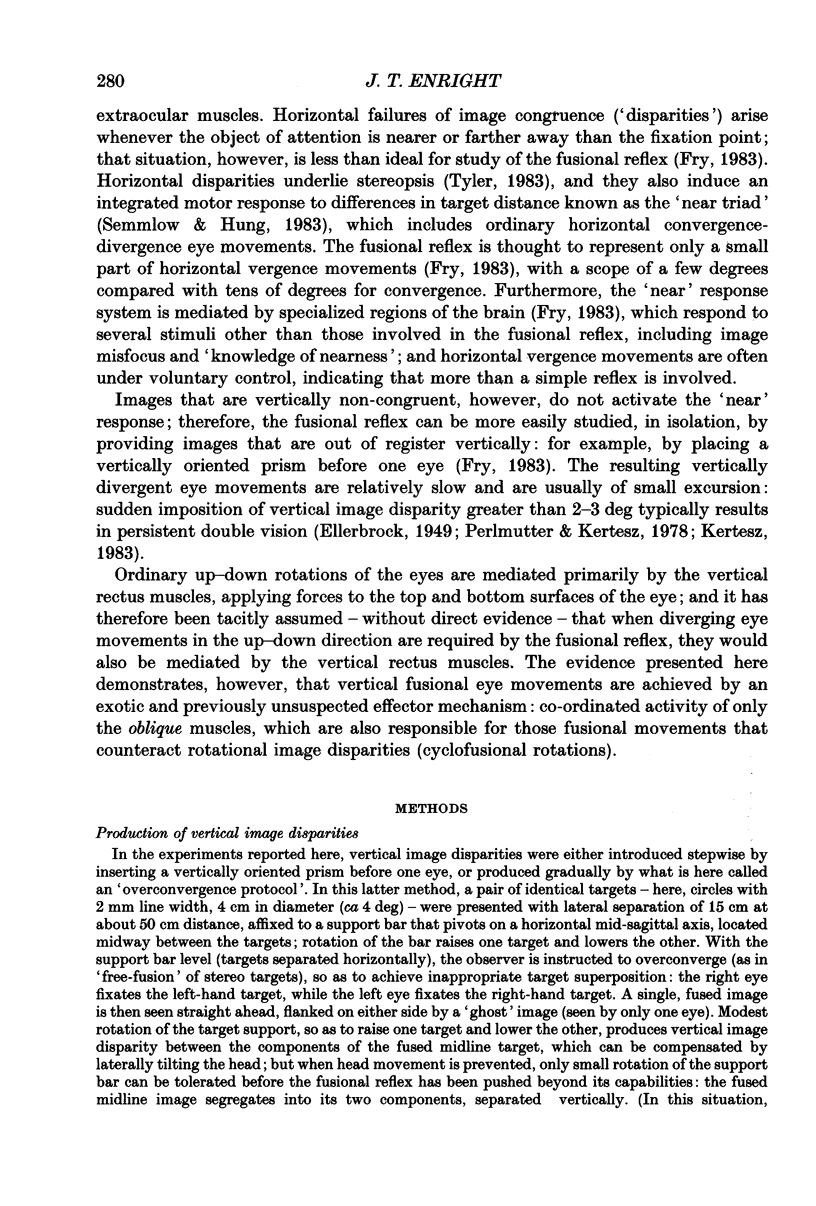
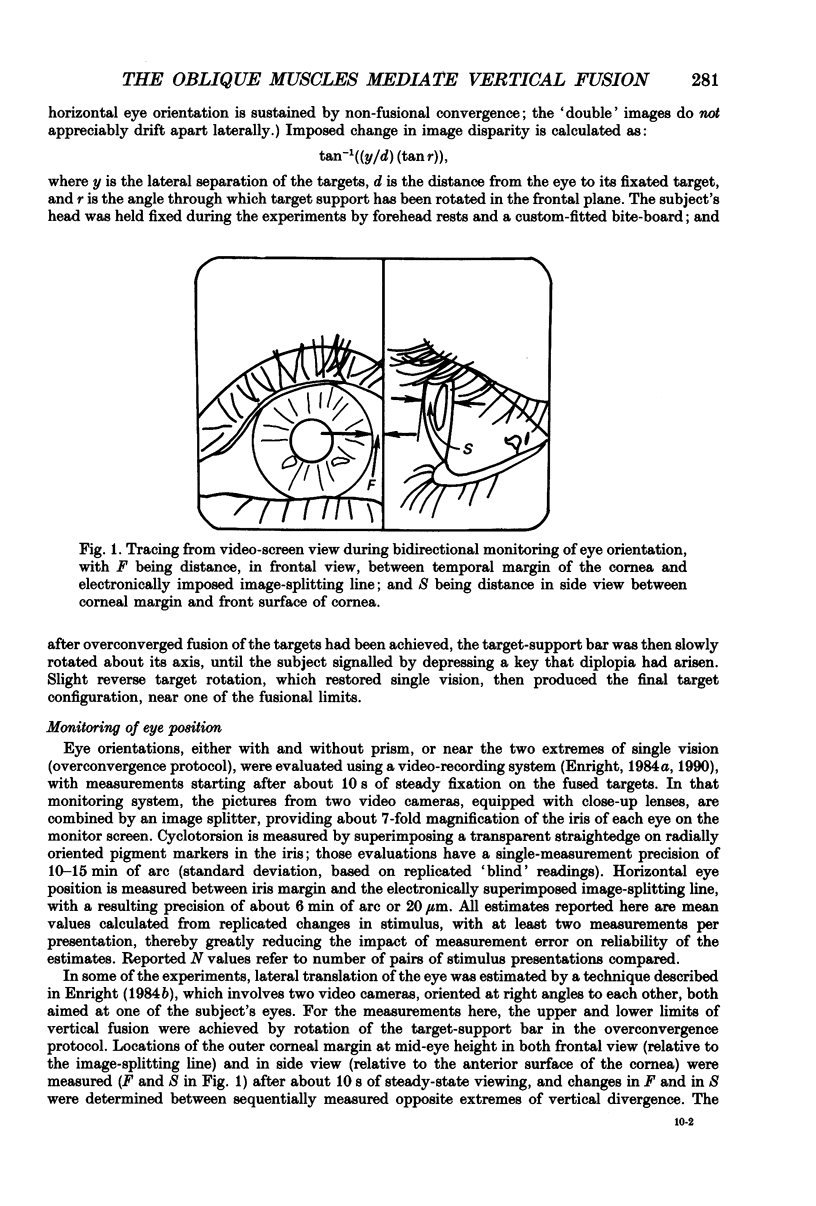
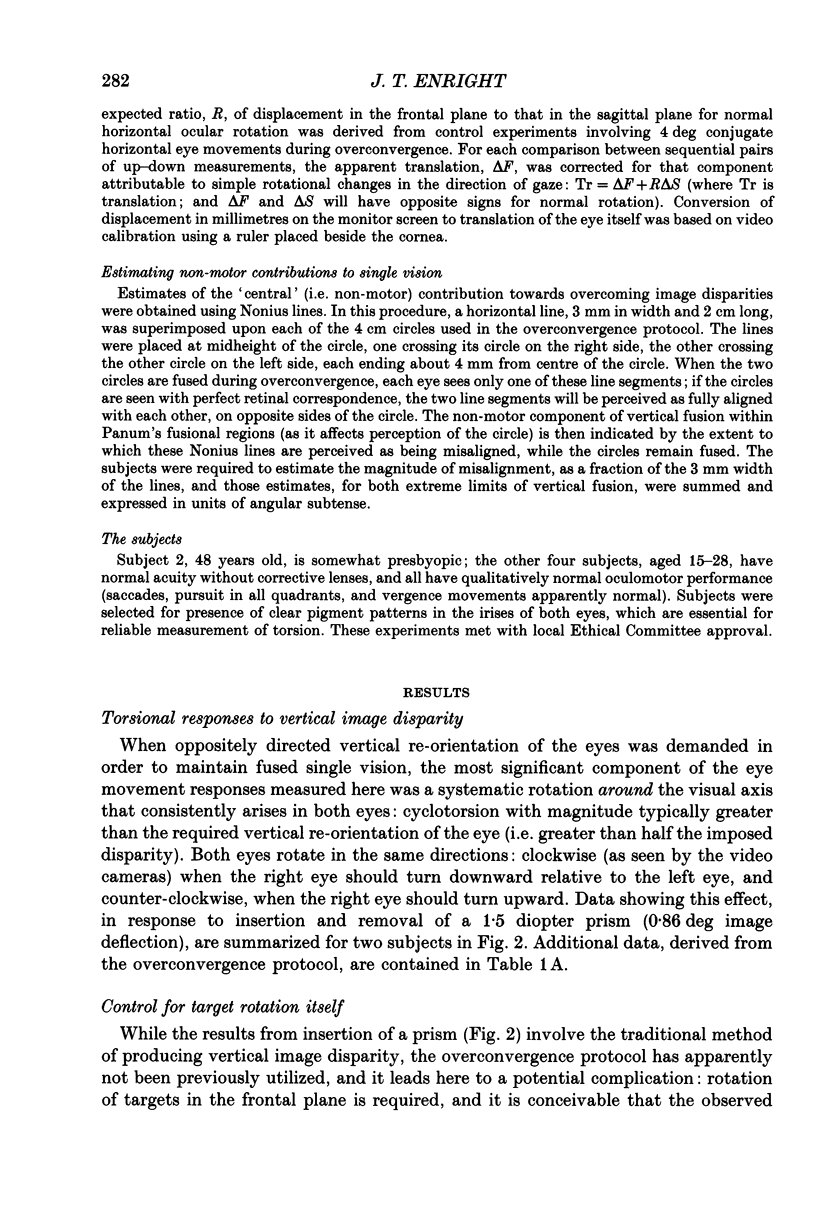
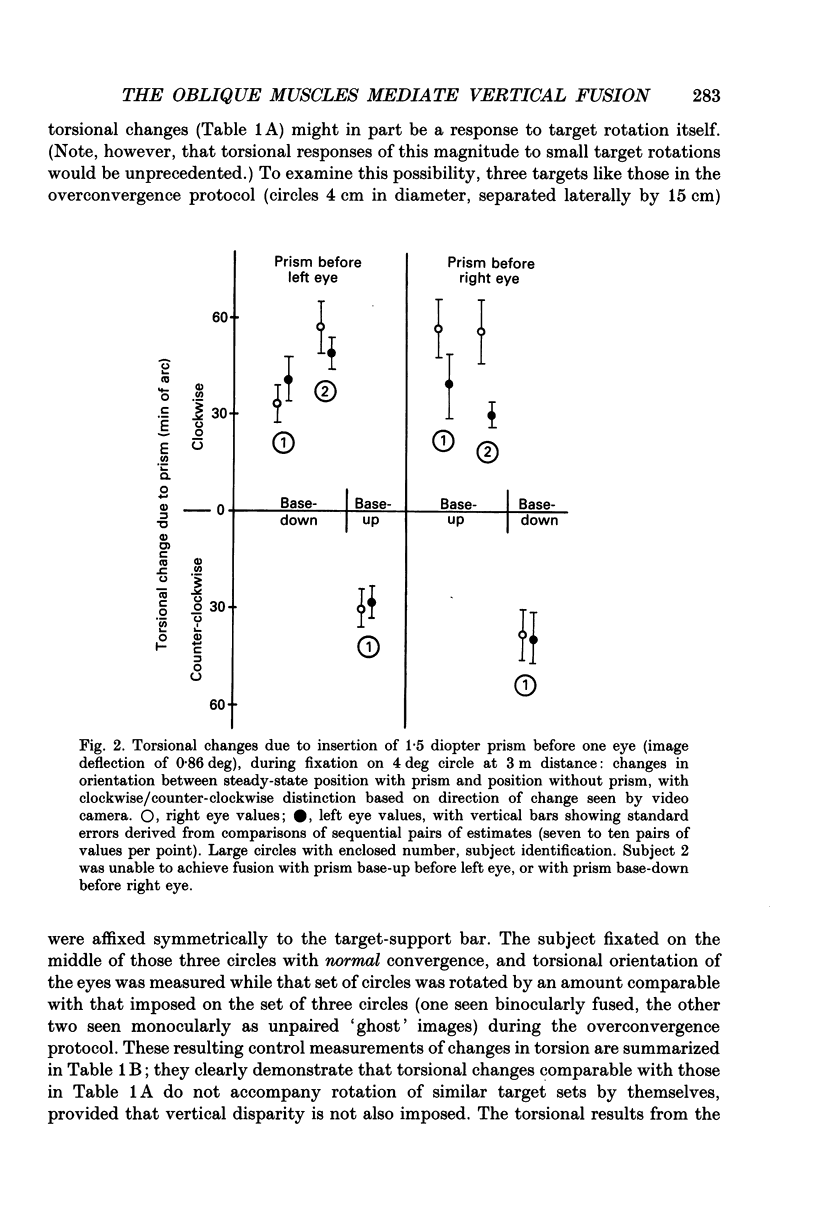
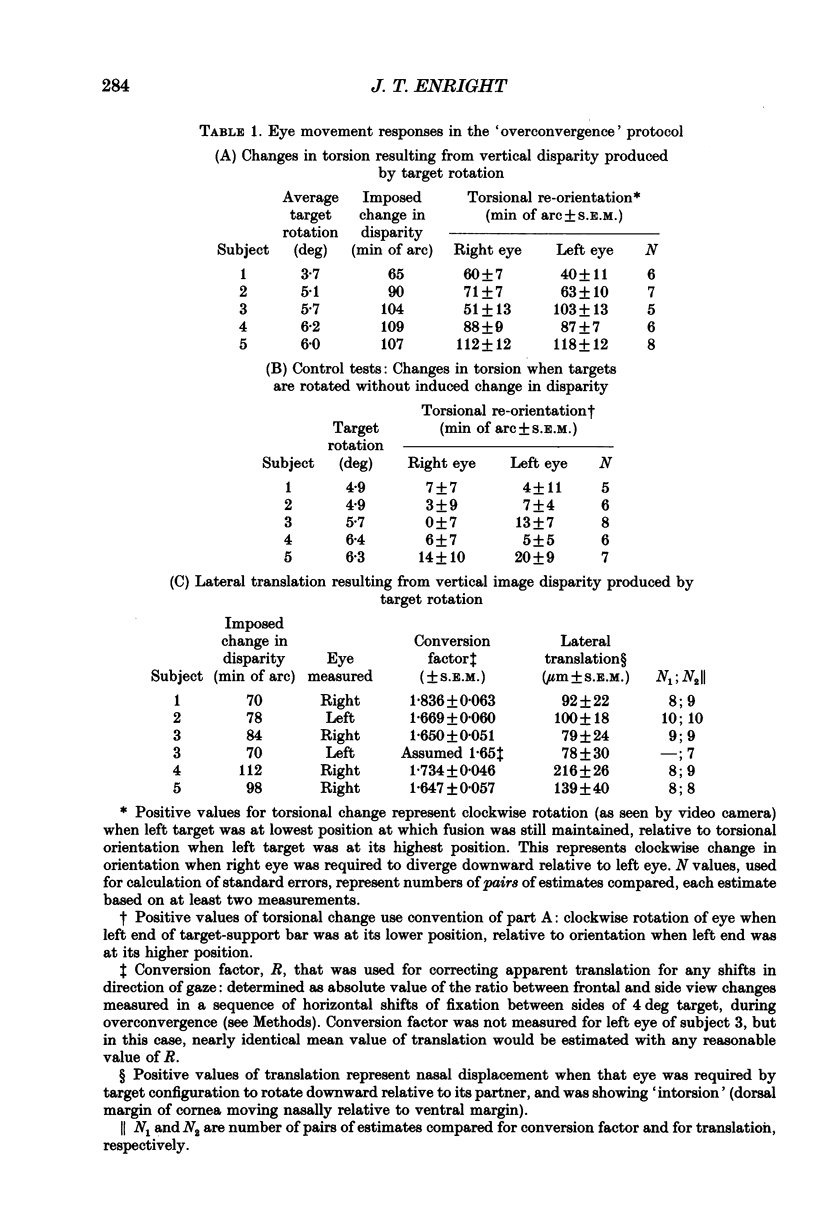

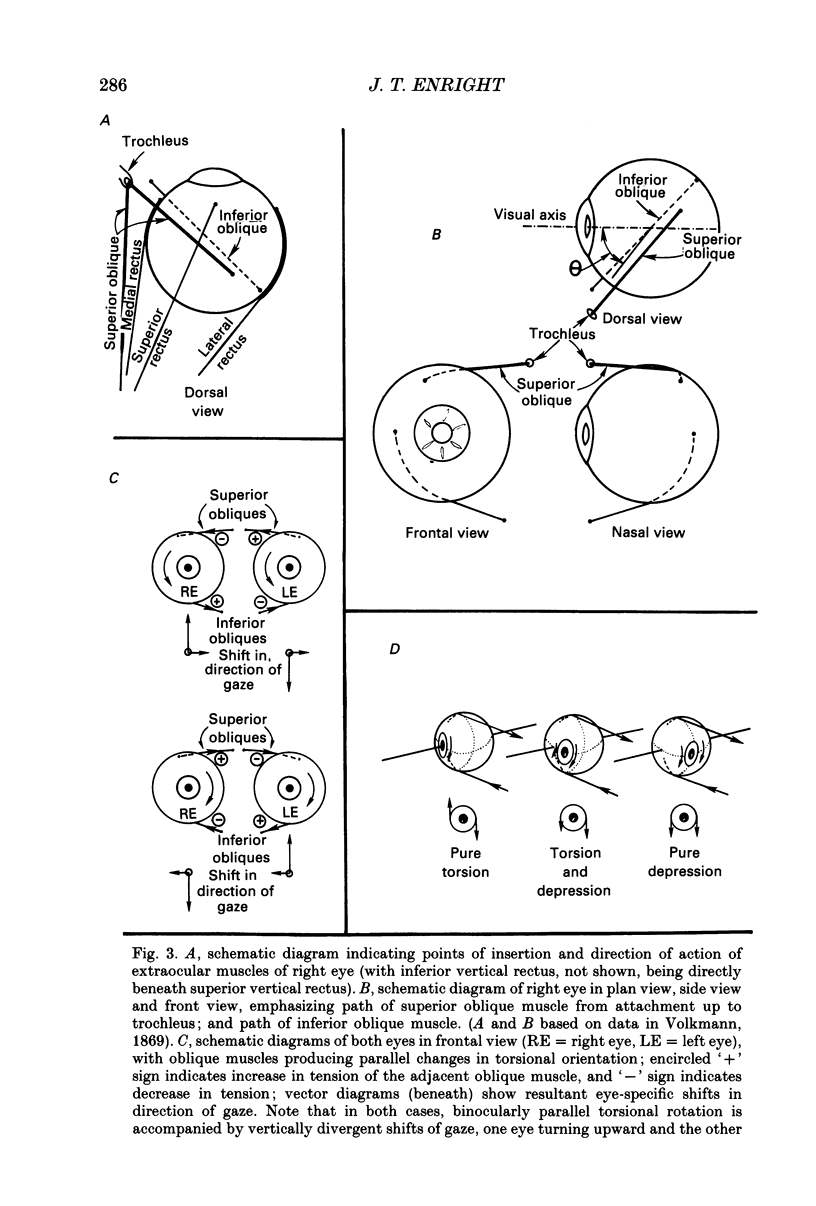
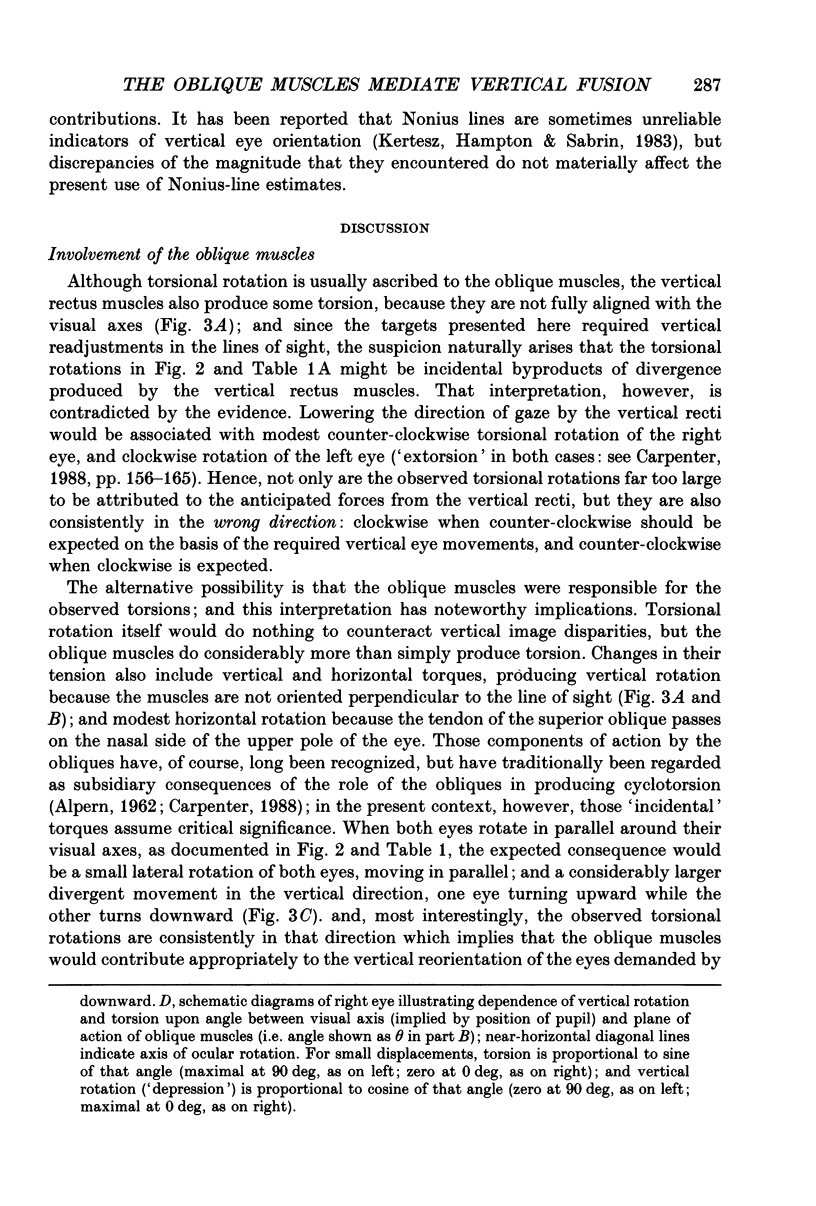
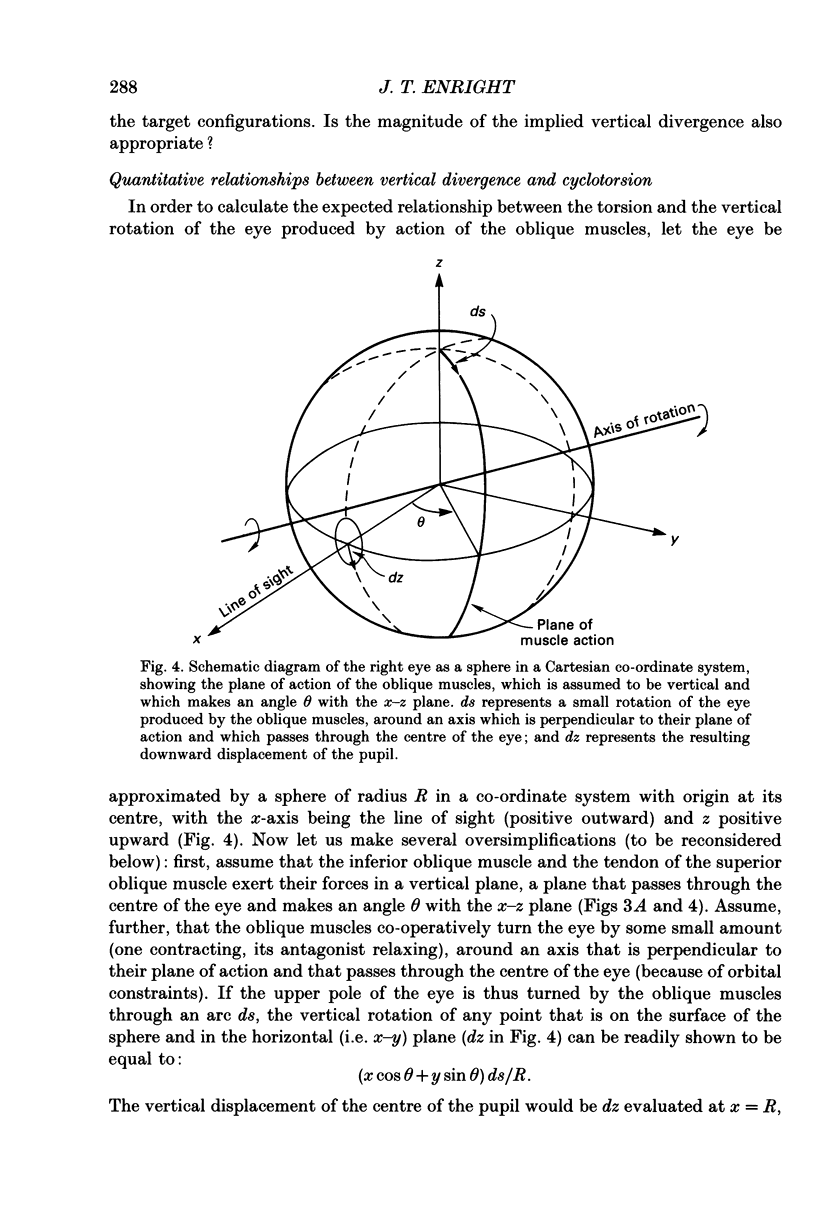
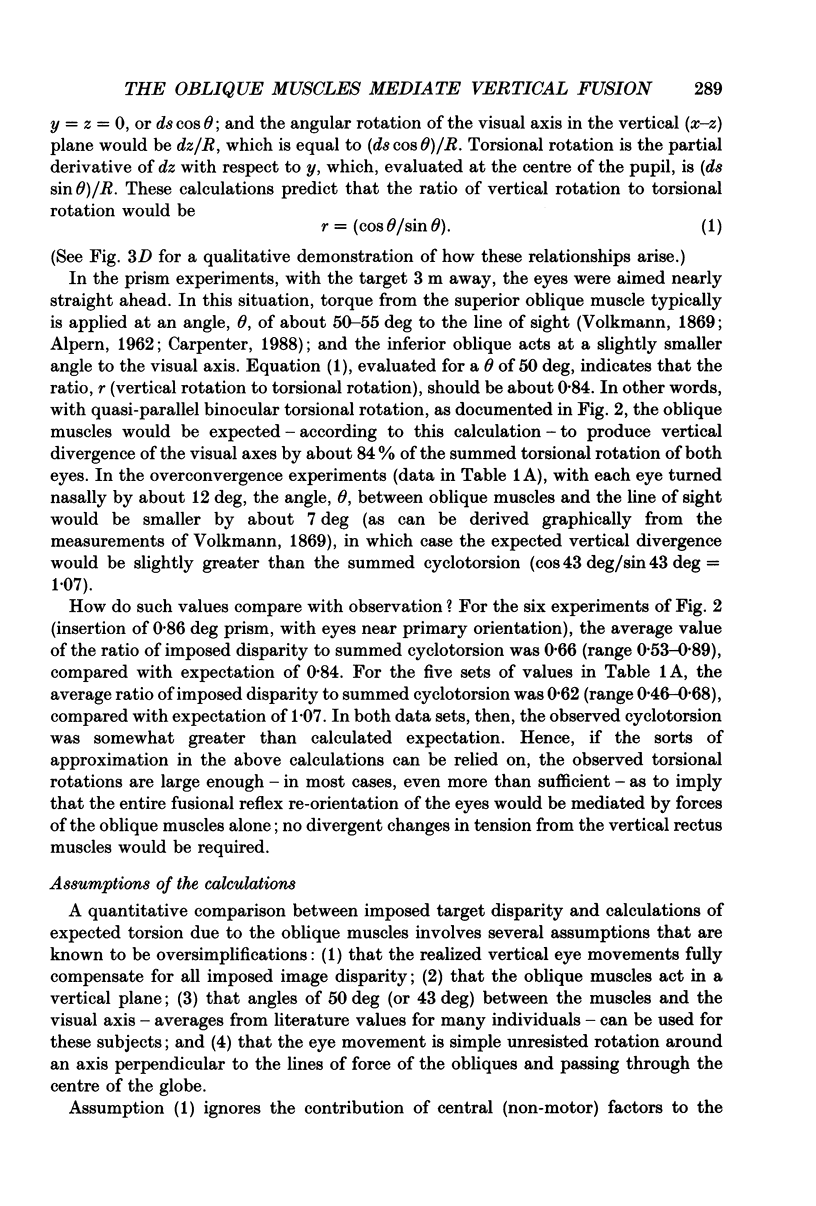
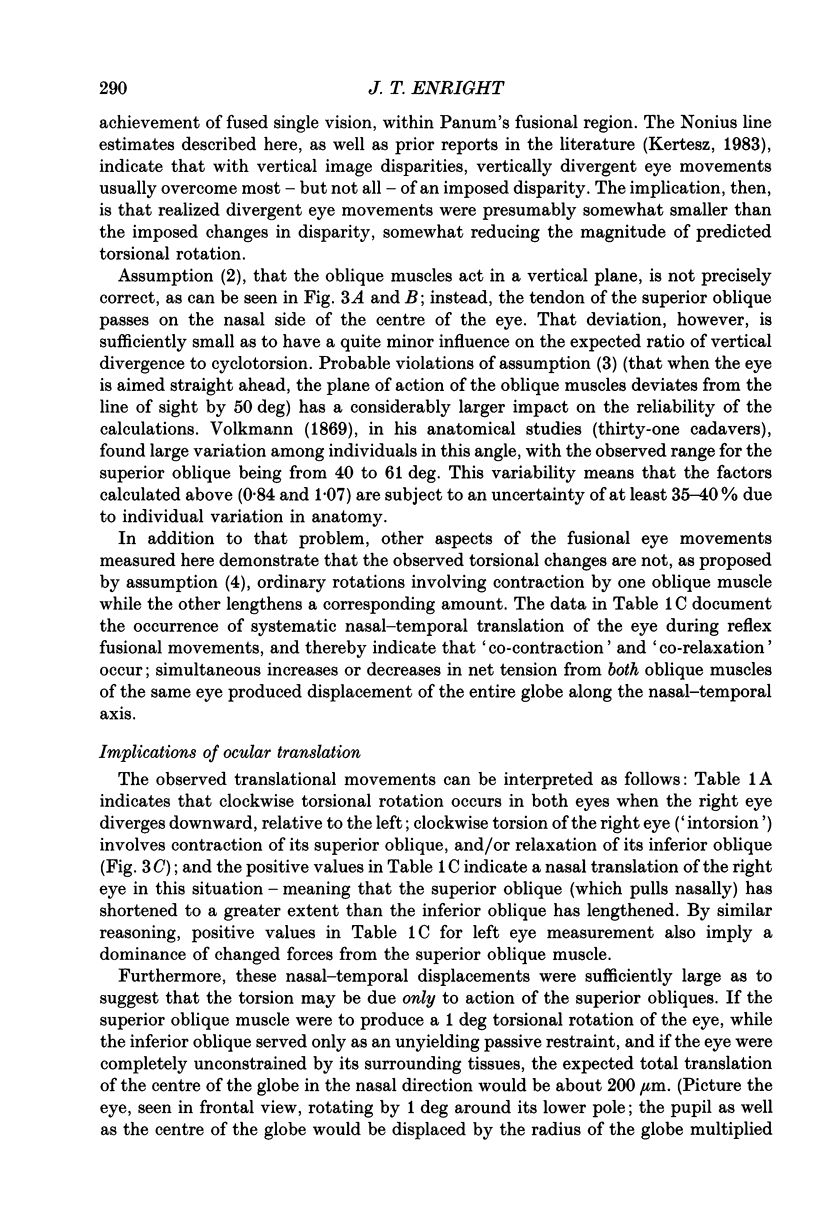
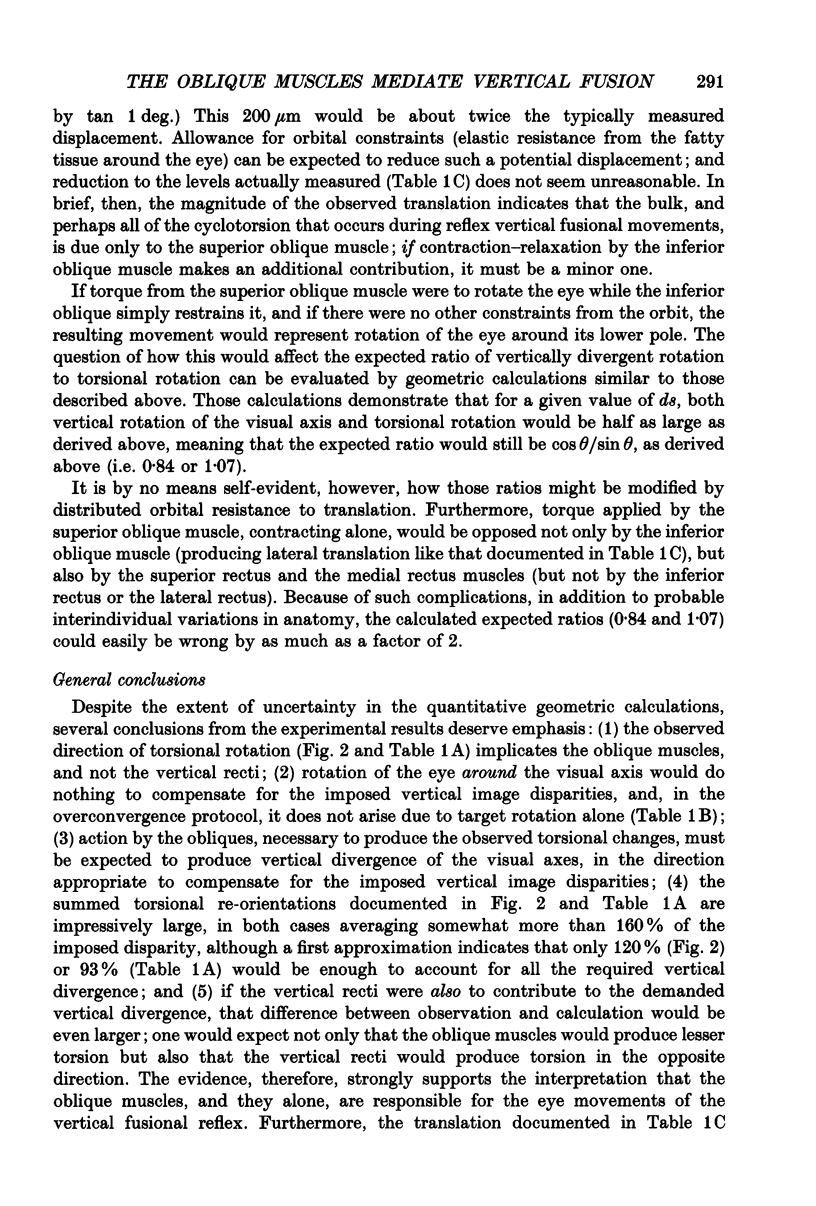
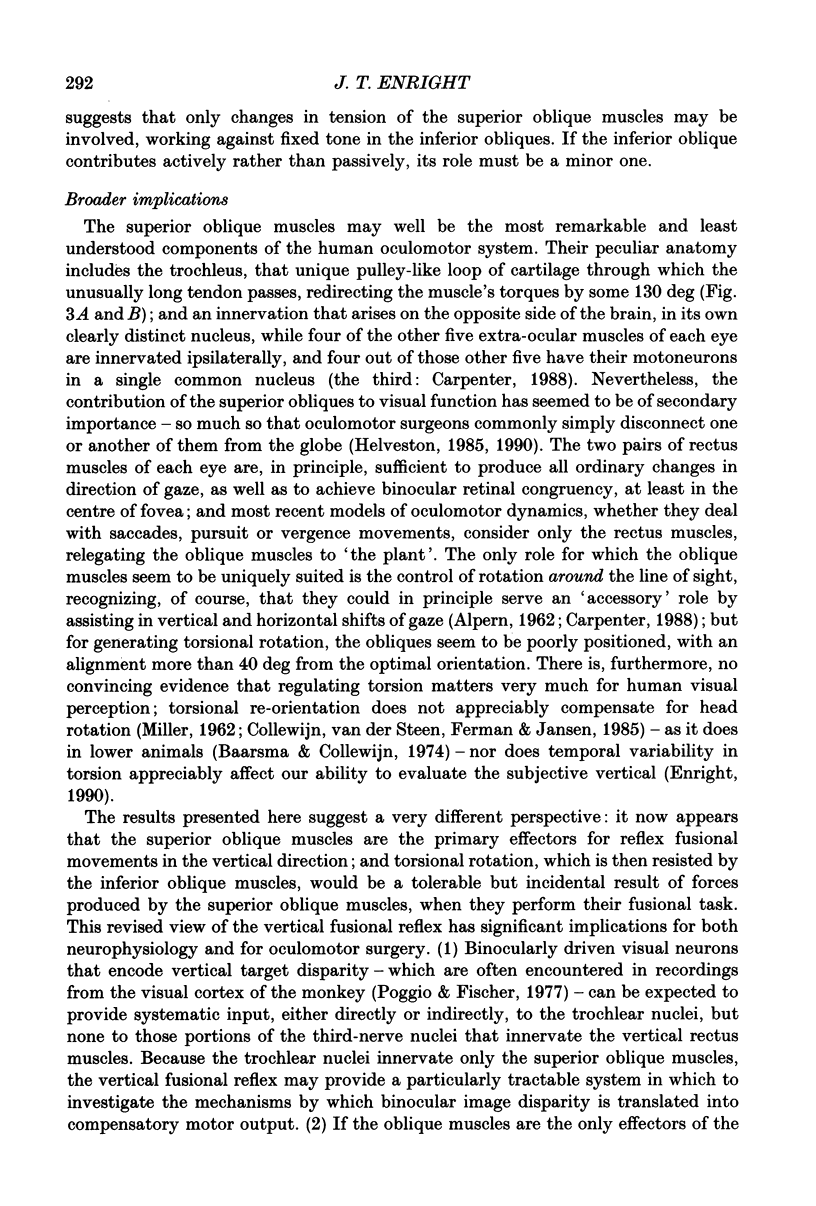
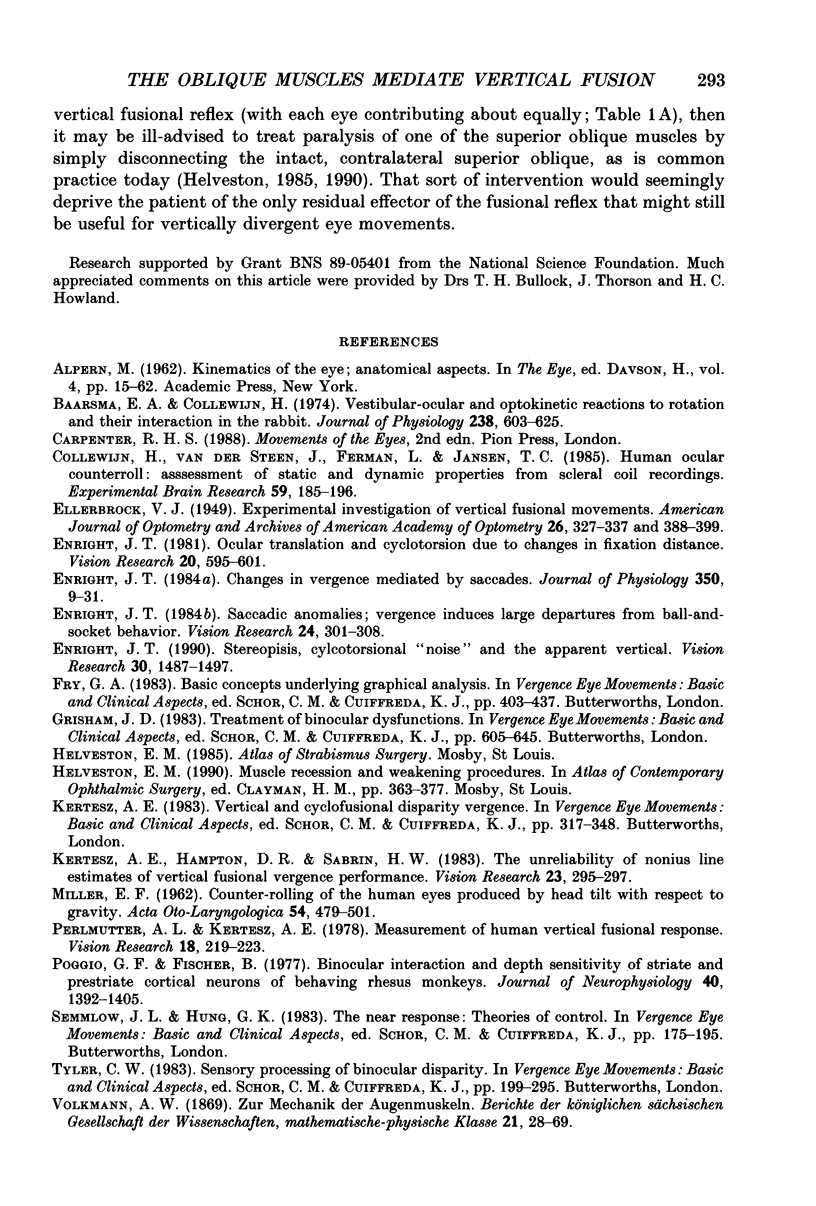
Selected References
These references are in PubMed. This may not be the complete list of references from this article.
- Baarsma E., Collewijn H. Vestibulo-ocular and optokinetic reactions to rotation and their interaction in the rabbit. J Physiol. 1974 May;238(3):603–625. doi: 10.1113/jphysiol.1974.sp010546. [DOI] [PMC free article] [PubMed] [Google Scholar]
- Collewijn H., Van der Steen J., Ferman L., Jansen T. C. Human ocular counterroll: assessment of static and dynamic properties from electromagnetic scleral coil recordings. Exp Brain Res. 1985;59(1):185–196. doi: 10.1007/BF00237678. [DOI] [PubMed] [Google Scholar]
- Enright J. T. Changes in vergence mediated by saccades. J Physiol. 1984 May;350:9–31. doi: 10.1113/jphysiol.1984.sp015186. [DOI] [PMC free article] [PubMed] [Google Scholar]
- Enright J. T. Ocular translation and cyclotorsion due to changes in fixation distance. Vision Res. 1980;20(7):595–601. doi: 10.1016/0042-6989(80)90116-9. [DOI] [PubMed] [Google Scholar]
- Enright J. T. Saccadic anomalies: vergence induces large departures from ball-and-socket behavior. Vision Res. 1984;24(4):301–308. doi: 10.1016/0042-6989(84)90055-5. [DOI] [PubMed] [Google Scholar]
- Enright J. T. Stereopsis, cyclotorsional "noise" and the apparent vertical. Vision Res. 1990;30(10):1487–1497. doi: 10.1016/0042-6989(90)90029-k. [DOI] [PubMed] [Google Scholar]
- Kertesz A. E., Hampton D. R., Sabrin H. W. The unreliability of nonius line estimates of vertical fusional vergence performance. Vision Res. 1983;23(3):295–297. doi: 10.1016/0042-6989(83)90119-0. [DOI] [PubMed] [Google Scholar]
- MILLER E. F., 2nd Counterrolling of the human eyes produced by head tilt with respect to gravity. Acta Otolaryngol. 1962 Jun;54:479–501. doi: 10.3109/00016486209126967. [DOI] [PubMed] [Google Scholar]
- Perlmutter A. L., Kertesz A. E. Measurement of human vertical fusional response. Vision Res. 1978;18(2):219–223. doi: 10.1016/0042-6989(78)90190-6. [DOI] [PubMed] [Google Scholar]
- Poggio G. F., Fischer B. Binocular interaction and depth sensitivity in striate and prestriate cortex of behaving rhesus monkey. J Neurophysiol. 1977 Nov;40(6):1392–1405. doi: 10.1152/jn.1977.40.6.1392. [DOI] [PubMed] [Google Scholar]


